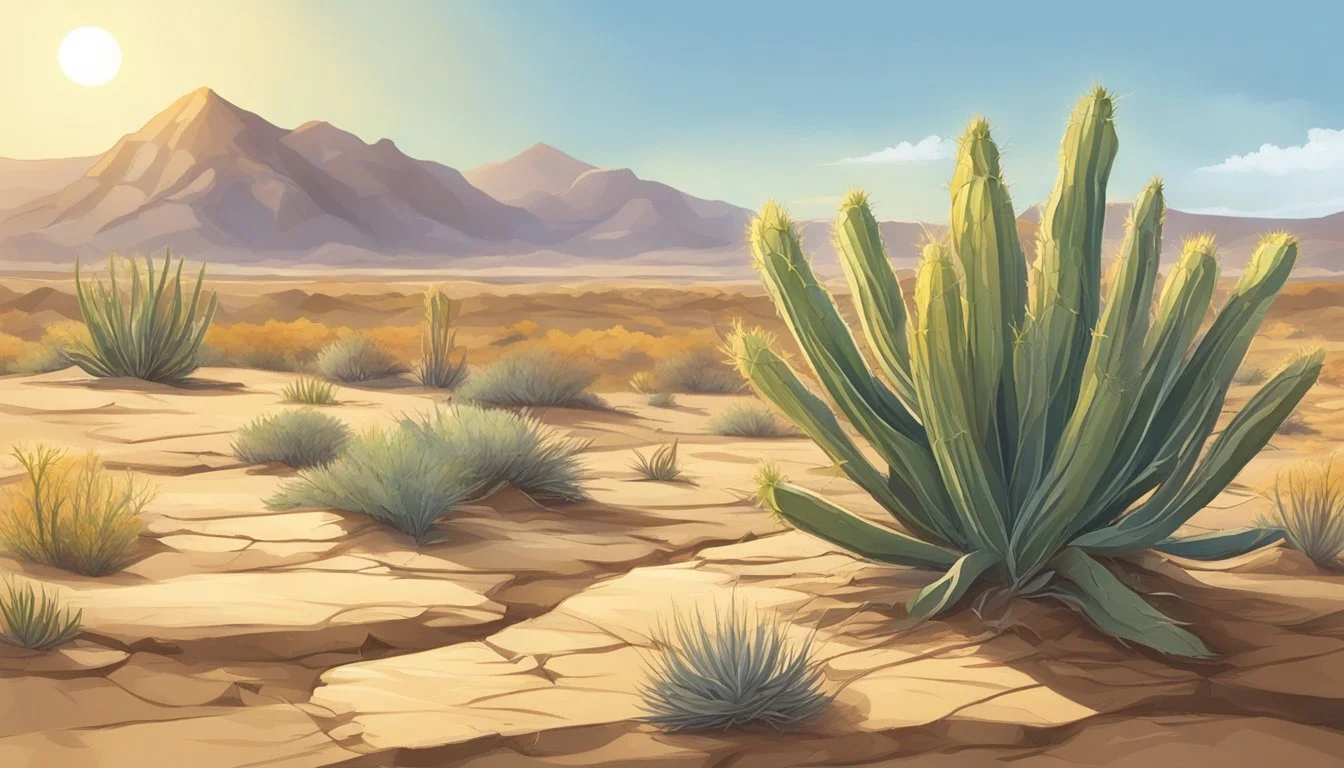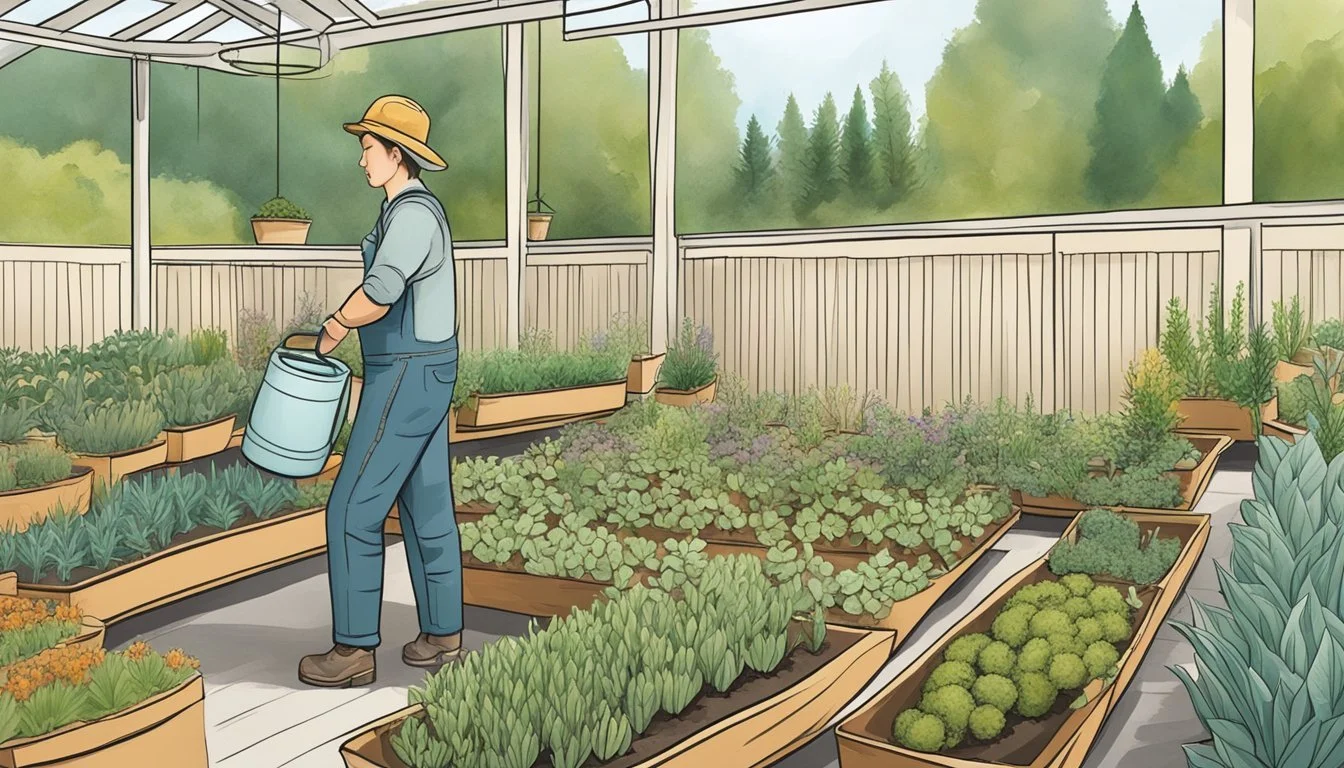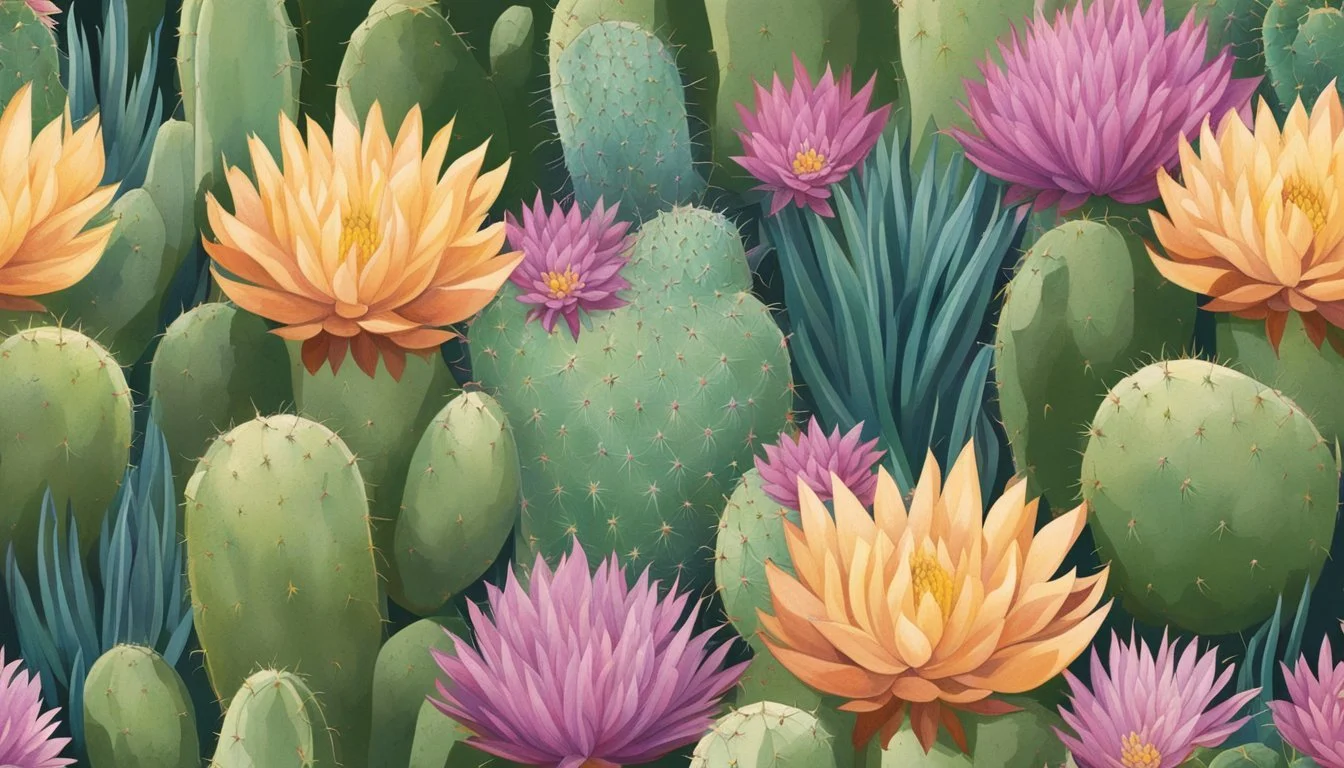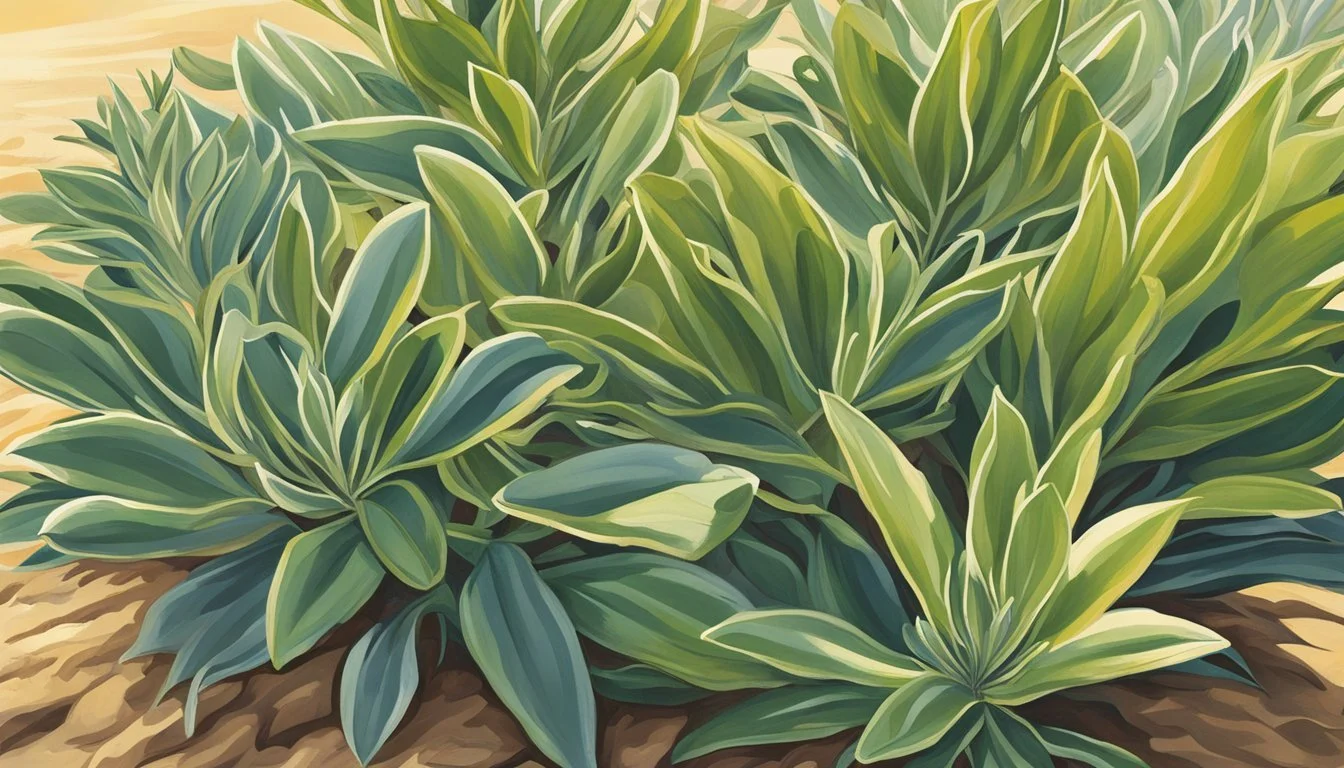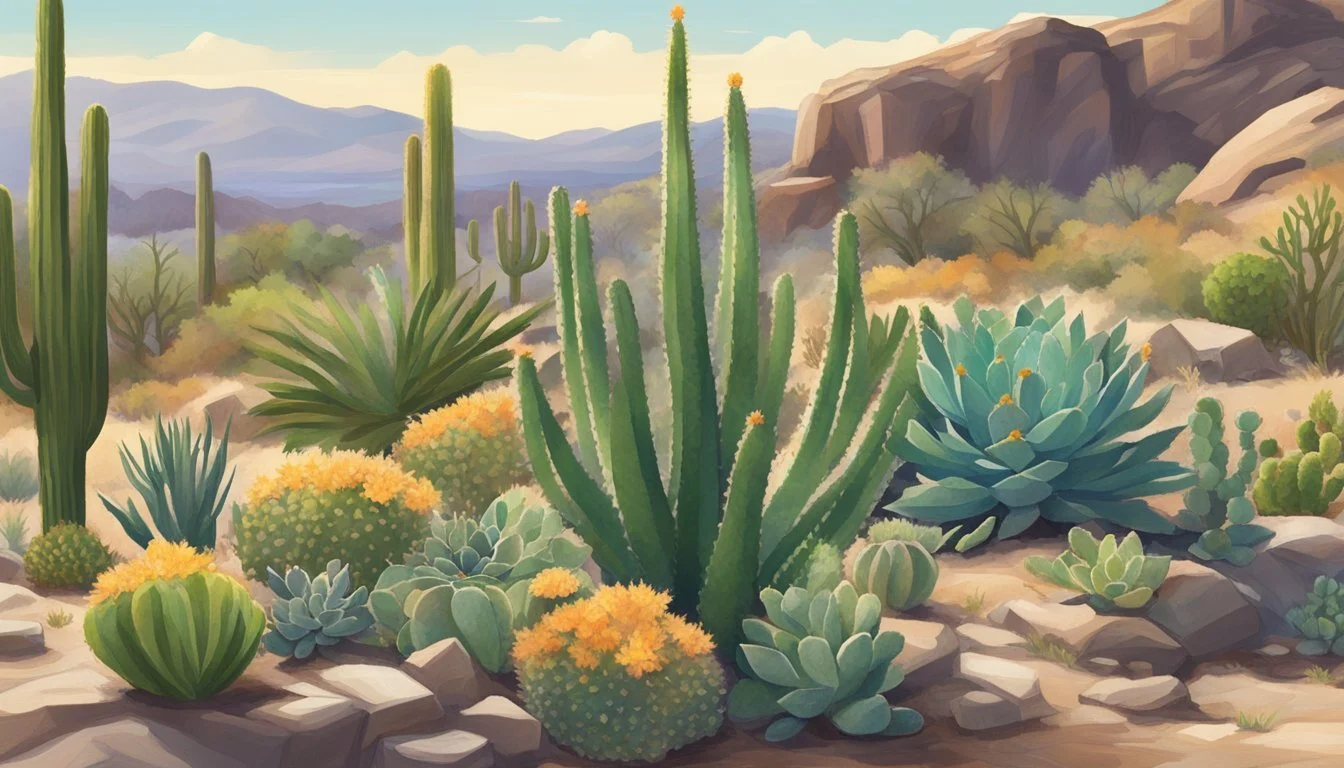Drought-Tolerant Plants in Oregon
A Guide to Resilient Gardening
Oregon's climate poses unique challenges for gardeners and landscapers, especially considering the region's susceptibility to drought conditions. As water conservation becomes increasingly important, the selection of drought-tolerant plants for gardens and landscapes is a practical approach for sustainable horticulture in the state. Drought-tolerant plants are specially adapted to withstand dry periods, reducing the need for watering and offering a resilient and eco-friendly gardening solution.
Incorporating drought-tolerant plants into Oregon's gardens not only conserves water but also provides a diverse range of textures, colors, and forms to the landscape. Plants such as the Oregon white oak and the Ponderosa pine have evolved to thrive in Oregon's varying conditions. These species, along with others tailored to Oregon's specific climate zones, offer a robust palette for creating lush, water-wise gardens.
Gardeners seeking to embrace water efficiency can choose from an array of native and adapted plants that prosper in Oregon's Mediterranean climate of wet winters and dry summers. Such plants typically require less maintenance, are more disease-resistant, and provide essential habitat for local wildlife, creating a harmonious balance within the ecosystem. For those looking to convert their green spaces into drought-resistant havens, a multitude of resources are available, including local nurseries and extension services, which offer detailed guides on drought-tolerant species suitable for various landscapes across Oregon's diverse regions.
Understanding Drought in Oregon
Drought is a significant ecological concern in Oregon, widely impacting the state's climate and diverse ecoregions. Recognizing the patterns and areas at risk is crucial for sustainable land management.
Climate and Drought Patterns
Oregon's climate is largely influenced by the Pacific Ocean, resulting in wet winters and dry summers, especially in the western part of the state. This Mediterranean-like climate means that drought conditions can frequently occur, particularly during the summer months when rainfall is at its lowest. The state has observed a trend towards longer and more intense drought periods, exacerbating challenges related to water conservation and ecology.
Oregon's Diverse Ecoregions
The state of Oregon is home to a variety of ecoregions, ranging from coastal zones to high deserts and alpine forests. Each of these areas exhibits a distinct vulnerability to drought:
Coastal areas tend to be less affected by drought due to higher humidity and rainfall.
The Willamette Valley, a major agricultural hub, experiences moderate drought conditions but relies heavily on consistent water availability.
Eastern Oregon, including the high desert, faces more acute drought conditions, profoundly affecting water-sensitive habitats and agriculture.
Understanding these regional differences is key to managing the effects of drought across Oregon's complex landscapes.
Essentials of Drought-Tolerant Landscaping in Oregon
Creating a drought-tolerant landscape in Oregon requires several key considerations to ensure plant health and water conservation. Optimal soil preparation, efficient irrigation, and strategic landscaping are fundamental.
Soil Preparation for Drought Resistance
Soil that supports drought-tolerant plants must emphasize good drainage and organic matter. It's important to incorporate compost or other organic materials, which improve soil structure, aiding in water retention and root development. Soil amendments can enhance the resilience of plants during dry periods.
Effective Irrigation Systems
An effective irrigation system is pivotal for a drought-tolerant garden. Drip irrigation systems are highly recommended as they deliver water directly to the plant roots, reducing water loss due to evaporation. Timers and moisture sensors can further optimize water use, ensuring that plants receive water only when necessary.
Essential Landscaping Strategies
Strategic landscaping includes the use of mulch to retain soil moisture and reduce evaporation. It’s important to select drought-resistant native plants that are well-suited to Oregon's climate. Grouping plants with similar water needs and creating a landscape that reduces water runoff are also critical for a drought-tolerant landscape.
Selecting the Right Drought-Tolerant Plants
Selecting drought-tolerant plants for an Oregon garden necessitates consideration of the state's unique climate. Gardeners must focus on plant species that not only thrive with minimal water but also match the local soils and sun exposure.
Drought-Resistant Perennials
Perennials offer long-lasting garden enjoyment with plants that return year after year. In Oregon, drought-resistant varieties such as yarrow (Achillea millefolium) and lavender (Lavandula) are prized for their hardiness and low water needs. These perennials adapt well to the Mediterranean-like climate, with yarrow particularly notable for its resilience and vibrant flower clusters.
Yarrow: Full sun; well-drained soil; colorful blooms
Lavender: Full to partial sun; well-drained, sandy soil; fragrant flowers
Drought-Defying Groundcovers
For gardeners seeking to cover ground with minimal watering, sedum or stonecrop, is an excellent choice. These succulents form textured carpets of foliage and are adept at surviving dry conditions.
Sedum: Full to partial sun; well-drained soil; offers varied textures and hues
Resilient Shrubs and Trees
In the shrub category, the Oregon grape (Mahonia aquifolium) is an indigenous choice that bears year-round interest with its glossy foliage and blue berries. Among trees, the Oregon white oak (Quercus garryana) is highly drought-tolerant once established and anchors the landscape with its majestic form.
Oregon Grape: Partial shade; well-drained soil; evergreen leaves with yellow blooms
Oregon White Oak: Full sun; well-drained soil; supports diverse wildlife
Favorite Drought-Tolerant Species in Oregon
In Oregon's diverse climate, selecting drought-tolerant plants for landscaping not only conserves water but also provides vital habitat for local wildlife. The following sections explore prominent species that thrive in arid conditions while supporting pollinators and offering substantial foliage.
Flowering Plants for Pollinators
Penstemon, with its tubular flowers, is a particular favorite among gardeners for attracting hummingbirds. Varieties such as Penstemon 'Husker Red' stand out with their maroon foliage and white flowers. The long blooming period makes them a staple in a drought-tolerant garden.
Oregon Sunshine (Eriophyllum lanatum) is yet another pollinator magnet. Its bright yellow flowers are a beacon for bees and butterflies, making it an essential in any drought-resistant landscape. Oregon Sunshine is celebrated for its hardiness and joyful blooms that grace gardens from late spring through summer.
The Achillea millefolium, commonly called yarrow, offers finely dissected foliage and clusters of small flowers. It comes in a variety of colors that include shades of yellow, pink, and red. Yarrow is not only drought-tolerant but also easy to grow, making it ideal for novice gardeners.
Catmint (Nepeta spp.) is a beloved plant for its fragrant foliage and enduring purple flowers that attract a host of pollinators. It's a low-maintenance perennial that once established, thrives in dry conditions and keeps flowering from early summer until fall.
Shade Providers and Large Species
The Ponderosa Pine (Pinus ponderosa) is a hallmark of resilience and serves as a shade provider that can withstand arid climates. Growing tall, it's an excellent choice for a specimen tree in a spacious yard.
Quercus garryana, also known as the Oregon White Oak, is a native species valued not only for its drought tolerance but also its generous canopy. It's an important species for supporting wildlife and provides significant shade and aesthetic appeal with its majestic stature.
Blanket flower (Gaillardia) and poppy are two vibrant flowering plants that are adept at surviving in low-water conditions. The blanket flower, with its fiery red and yellow petals, thrives under full sun and poor soil. Both are often found in local nurseries and are excellent choices for adding color to a sun-soaked Oregon garden.
The Cercis canadensis, commonly known as Eastern Redbud, is a splendid tree that provides a burst of pink in early spring with its plentiful flowers. When established, the redbud can endure considerable dry periods, making it a favorite among drought-resistant species for any Oregon landscape.
Caring for Drought-Tolerant Plants
Drought-tolerant plants require specific strategies to thrive. Proper watering techniques, soil care, and pest management are vital for their success.
Watering Techniques and Guidelines
When establishing drought-tolerant plants, it's crucial to provide supplemental water with precision. Drip irrigation systems deliver water directly to the root zone, minimizing evaporation and waste. For mature plants, less frequent but deeper watering encourages strong root growth. Soaker hoses can be an effective alternative, providing slow, steady hydration. Hand watering is beneficial for spot-checking areas that may require additional attention.
Establishment Phase (1-2 years): Water regularly to help the plant establish.
Mature Phase: Reduce the frequency, but increase the depth of water to encourage deeper rooting.
Soil Maintenance and Mulching
Healthy soil rich in compost serves as the foundation for drought-tolerant plants. Organic compost improves soil structure, which aids water retention and drainage. A layer of mulch around plants suppresses weeds, retains moisture, and regulates soil temperature.
Enhance Soil: Work compost into the soil annually to maintain fertility.
Mulch: Apply 2-3 inches of mulch around plants, avoiding direct contact with stems.
Preventing and Managing Pests
Drought-tolerant plants can still be susceptible to pests. Regular monitoring helps early detection and management. Physical barriers or biological controls are often the first line of defense. If intervention is necessary, opting for environmentally friendly pesticides minimizes harm to the ecosystem.
Monitoring: Check plants regularly for signs of pest activity.
Intervention: Utilize low-impact pesticides as needed, following the manufacturer's guidelines.
Supporting Wildlife with Native Plants
Incorporating native flora into Oregon landscapes serves as a keystone for nurturing local ecosystems. These plants play a crucial role in offering sustenance and habitat for wildlife, while also being well-adapted to the state's climate.
Benefits of Native Flora for Local Fauna
Native plants hold intrinsic value for wildlife, creating a symbiotic environment where each species thrives. The deeply rooted Pacific madrone offers not only shade but a stable source of food and shelter. Nootka rose and wild strawberry, with their flowers and fruits, provide nourishing food sources for a variety of local fauna. These indigenous species foster a balanced ecosystem where pollinators flourish and food webs remain intact.
Food Supply: Native berries and nectar-rich flowers sustain birds, bees, and butterflies.
Shelter and Nesting: Dense shrubbery and towering trees give cover and breeding grounds.
Ecological Balance: Native species support natural predator-prey relationships.
Native Plants that Thrive in Dry Conditions
Drought-resistant native plants like yucca and agave are ideal for water-efficient gardens, requiring minimal irrigation yet offering critical resources for wildlife. These hardy species adapt to Oregon's dry summers, reducing the need for water resources and persisting through periods of drought.
Yucca: Provides structure to the garden, attracts pollinators with its tall flower spikes.
Agave: Boasts a unique aesthetic, while its blooms are a magnet for nectar-seeking insects.
For gardeners in Oregon, choosing drought-tolerant native plants is a wise decision for supporting local wildlife and conserving water. These plants not only reduce maintenance but also play a fundamental role in the local biodiversity.
Resource Conservation and Sustainability
In Oregon, where water scarcity can be a concern, the use of drought-tolerant plants is a significant step towards resource conservation and sustainability. These plants help in reducing water usage and maintaining ecological balance even under water stress conditions.
Advantages of Using Drought-Tolerant Plants
Drought-tolerant plants inherently require less water, which is essential in regions experiencing a Mediterranean climate. Not only do they conserve water, but they also lower garden maintenance needs and are likely to survive in varying climatic conditions. They usually possess taproot systems reaching deeper into the soil to extract water, thus making them resilient during dry spells. By implementing drought-tolerant plants in landscaping, one supports the local ecosystem and promotes sustainability in gardening practices.
Conservation Tips for Home Gardeners
Home gardeners can contribute to conservation efforts by:
Choosing the Right Plants: Opt for species native to Oregon's climate or those adapted to dry conditions.
Mulching: Apply a layer of mulch around your plants to reduce water evaporation from the soil.
Watering Wisely: Water plants during the cooler parts of the day to minimize loss from evaporation and use drip irrigation systems to deliver water directly to the plant roots.
Soil Care: Enhance soil with compost to improve water retention and reduce the need for frequent watering.
Via OSU Extension Service, one can select an array of species that exhibit high drought tolerance suitable for Oregon's unique environment. Gardeners can contribute significantly to local water conservation efforts by implementing these strategies and choosing appropriate plants for their landscapes.
Planting and Maintenance Tips by Expert Horticulturists
Expert horticulturists provide specific guidance for establishing and preserving drought-resistant landscapes in Oregon. These insights focus on the best practices for planting and the essential tasks for long-term maintenance.
Best Practices for Planting Drought-Resilient Vegetation
When planting vegetation that can withstand arid conditions, seasonal timing is crucial. Oregon State University horticulturists advise planting in the early fall or late winter to allow plants to establish their root systems during cooler months, which can lead to better drought tolerance. They emphasize the importance of:
Assessing the location: Ensuring it provides adequate sunlight and has well-draining soil.
Amending soil: Incorporating organic matter to improve soil structure and water retention, supporting robust root growth.
Watering practices should encourage deep root systems. For initiating growth:
Water deeply: Apply water slowly and deeply to encourage roots to extend downward.
Reduce frequency: Gradually decrease watering frequency to promote root self-sufficiency.
Long-term Maintenance and Care
Maintaining drought-tolerant plants involves regular tasks to ensure their sustainability. Expert horticulturists from Oregon recommend:
Seasonal care: Adjust care strategies with the changing seasons, particularly reducing irrigation during the winter months.
Weeding: Regularly remove weeds that compete for water and nutrients.
Mulching: Apply a layer to keep soil moisture levels consistent and lower soil temperature.
In terms of pruning and fertilization:
Prune as needed, removing only what is necessary to maintain plant health and structure.
Fertilize sparingly, as excessive growth can reduce a plant's drought resilience.
Incorporating Drought-Tolerant Plants in Garden Design
Incorporating drought-tolerant plants into garden designs in Oregon not only saves water but also adds diverse textures and colors to the landscape. Selecting the right plants and designing for both aesthetics and functionality are critical steps.
Designing for Aesthetics and Functionality
When designing a drought-tolerant garden, it's important to consider the visual impact alongside practicality. One can create dynamic visual interest by arranging plants like Artemisia and Cotoneaster, offering silver foliage and bright berries respectively. Incorporating these plants into groupings with varied textures and heights produces a rich tapestry that pleases the eye while fulfilling ecological functions. Salvia, for instance, is not only attractive with its vibrant flowers but also attracts pollinators. This evergreen foliage, along with the stately Garry Oak, can provide year-round structure and a sense of permanence within the landscape.
Choosing Plants Based on Location and Sun Exposure
The success of a drought-tolerant landscape largely depends on matching plant needs with the specific site conditions. For areas with full sun exposure, selections like Salvia, thriving in hot and sunny spots, are ideal. In contrast, Cotoneaster can tolerate a range of conditions, from full sun to partial shade. The iconic Garry Oak is another excellent choice for sunny areas and is well-adapted to the Oregon climate. It's crucial to group plants with similar sunlight and water requirements to ensure their health and reduce maintenance. By doing so, gardeners can achieve a harmonious and sustainable drought-tolerant garden design.
Meanwhile, for a comprehensive look at integrating native Pacific Northwest flora into your garden, one may consider insights on water-wise landscapes.
Frequently Asked Questions
In response to increasing interest, here is an informative segment featuring common inquiries about cultivating drought-resistant flora in Oregon's diverse climates.
What are some top recommended drought-tolerant plants for Oregon landscapes?
Oregon is home to a variety of flora well-suited for arid conditions. For instance, the Ponderosa Pine is particularly recommended for its high drought tolerance and the Oregon White Oak is celebrated for its resilience and longevity.
Can you list evergreen shrubs that are drought-tolerant in USDA Zone 8?
In USDA Zone 8, evergreens such as Manzanita and Oregon Grape offer year-round foliage and can thrive with minimal water once established.
What are the best low water use plants for gardeners in the Willamette Valley?
For gardeners in the Willamette Valley, the Bigleaf Maple is touted for its drought-tolerance. One can consider water-wise fruit trees such as figs and persimmons as part of a low irrigation landscape.
What are the ideal drought-tolerant plants for full sun exposure in Oregon?
Plants such as Lavender and Sedum are ideal for areas receiving full sun in Oregon. They not only tolerate the heat but require minimal watering, making them excellent choices for sunny spots.
Which drought-tolerant plants are suitable for container gardening in Oregon?
Herbs like Rosemary and Thyme are suitable for container gardening in Oregon due to their low water needs and adaptability to various soil conditions.
How can I ensure a low maintenance garden with drought-tolerant plants in Oregon?
To ensure a low maintenance garden, one must opt for native plants which are acclimatized to Oregon's climatic conditions. Mulching and selecting plants with similar water requirements can further reduce maintenance.


